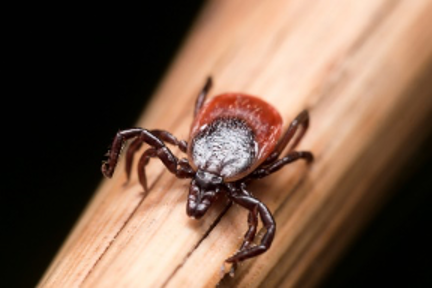Fall is a wonderful season for many reasons. Apple cider, orchards, sweater weather… less pests bugging you outside! But what about ticks? Where do they go in the fall? Adult ticks are actually most active in the fall! Learn how to protect yourself against disease-carrying ticks during fall months.
Are Ticks Still Active in the Fall?
The short answer: yes. Ticks remain a threat all year long. The blacklegged deer tick becomes especially active during the fall months due to its lifecycle. Protect yourself from the tell-tale tingle of tiny legs on your skin as well as tick-borne illnesses by learning more about these pesky pests.
How Do Ticks Survive the cold?
You may think of ticks as insects, but ticks are hearty and stubborn little arachnids that have more in common with spiders than beetles. To understand how a tick survives all-year-long, including fall and winter, let’s look at their lifecycle.
Ticks live approximately two years and have four distinct phases of life:
● Eggs. Adult females lay their eggs in the spring. Despite their size, one female can lay thousands of eggs. These reddish-brown translucent eggs can be spotted in any warm, soft place outside or inside. Eliminating these nests is one way to reduce the population.
● Larva. Tick eggs hatch into tiny larvae during the summer. These eager and hard-to-spot predators are hungry for their first blood meal. They wait and attach to small animals like mice. Larvae do not carry diseases at the time of hatching but may acquire them if they feed on an infected animal. Once they feed, they are ready to begin the next phase.
● Nymph. Larvae molt into nymphs in the fall and spring months. Nymphs are especially active in spring when they seek their next blood meal. A nymph will feed 4-5 days on animals or humans. If it carries Lyme or other diseases, a nymph could infect the host.
● Adult. A well-fed nymph drops off its host and grows to a full-grown adult in fall. These adults are ready for their third and final feeding. A female tick gorges herself to acquire the proteins necessary to produce and lay eggs. The male tick dies shortly after mating and the female dies once her eggs are laid. The final push to reproduce by the adult tick during fall makes it an especially active time.
When temperatures drop below 45°F, ticks in any stage become dormant. To survive, they latch onto a warm host or burrow into the ground or leaf litter where they become insulated by snow over winter. Much like a bear, their systems slow down until the weather is warm again. Even after a hard frost, if the weather becomes warm, ticks will become active until the temperatures drop again.
What Are the Common Types of Fall Ticks?
There are three main types of ticks to be concerned with in the Midwest:
● The American dog tick is more commonly known as the wood tick. These ticks prefer open grassy areas without a lot of tree cover. They are most active in the summer months, but the nymphs can be found in September. They do not carry Lyme disease but can transmit Rocky Mountain Spotted Fever.
● The lone star tick is named for the distinct white dot on the female’s back. This variety is more common in the south but can be found in the Midwest. While they may carry Lyme, they aren’t able to transmit it. They are a more aggressive species of tick and are active during fall months.
● Blacklegged ticks or deer ticks are the most dangerous variety you should be concerned with. They are carriers and transmitters of Lyme disease and the tiny nymphs are often difficult to spot. These ticks are active in fall months and even on warm winter days when the temperature is above 45 degrees.
How Do I Protect Against Ticks?
When you are out in wooded or grassy areas, protect yourself with these simple precautions:
● Wear light colored clothing that makes ticks easy to spot.
● Tuck pants into socks to prevent skin access.
● Treat clothes with Picaridin, a proven tick repellent that soaks into your garments.
● Apply DEET or other repellent to your skin and clothes.
● Treat dogs with a pet-friendly tick preventative and check them frequently.
● Check yourself frequently.
What Do I Do If I Get a Tick Bite?
Check yourself frequently for ticks. To transmit Lyme disease, an infected tick needs to be attached for 24-48 hours.
If you find a tick burrowed into your skin, remove the entire tick, including the head using your fingers or a tweezer as close to the bite as possible. Clean the affected area with soap and water or rubbing alcohol and watch for signs of rash or infection.
If you experience any of these symptoms over the next week, contact your doctor.
· Headache
· Rash
· Aches
· Fever
If you feel sick, make sure to tell your doctor about the bite. Tick-borne illnesses can become serious if not treated early on and may have life-long repercussions.
Your Tick Prevention Experts
If you’re worried about tick prevention in your neck of the woods, contact Plunkett’s today. One of our friendly pest management specialists can inspect your grounds and suggest the best preventative to keep ticks away in fall and all year round.









